Research Article Open Access
Evidence-Based Practice in Radiography: Attitudes, Beliefs, Knowledge and Practices of Radiographers in Ghana
| Kyei KA*, Antwi WK and Suapim JB | |
| Department of Radiography, School of Allied Health Sciences, University of Ghana, P. O. Box, KB 143, Korle-Bu, Accra, Ghana | |
| Corresponding Author : | Kofi Adesi Kyei Lecturer, Department of Radiography School of Biomedical &Allied Health Sciences P.O. Box KB 143, Korle-BuAccra-Ghana Tel: +233207007124 E-mail: adesco41@hotmail.com |
| Received November 26, 2014; Accepted January 02, 2015; Published January 05, 2015 | |
| Citation: Kyei KA, Antwi WK, Suapim JB (2015) Evidence-Based Practice in Radiography: Attitudes, Beliefs, Knowledge and Practices of Radiographers in Ghana. OMICS J Radiol 4:176. doi: 10.4172/2167-7964.1000176 | |
| Copyright: © 2015 Kyei KA et al. This is an open-access article distributed under the terms of the Creative Commons Attribution License, which permits unrestricted use, distribution, and reproduction in any medium, provided the original author and source are credited. | |
Visit for more related articles at Journal of Radiology
Abstract
Background: Evidence-based practice (EBP) has been identified as a standard in healthcare and the principles and practice of EBP are widely promoted and increasingly accepted by various professional bodies. Radiographers are therefore aware of the need to change attitudes and develop skills necessary for the integration of EBP into clinical practice.
Aim: The main purpose of this study was to describe the attitudes, beliefs, knowledge and practices of radiographers with regard to evidence-based practice in Ghana.
Methods: Nationwide survey done resulted in a response rate of 92.1% representing 199 participants. Participants completed a questionnaire designed to determine attitudes, beliefs, knowledge and practices, of their profession. Descriptive statistics was used to show the responses in tabular and graphical formats.
Results: Most respondents (56.6 %) disagreed that strong evidence was lacking to support their practice. Only 39% of the respondents agreed that they had knowledge of medical search engines e.g. MEDLINE, Cochraine etc. 43% of the respondents reported using professional literature in clinical decision-making five or fewer times per month. The primary barrier to implementing EBP was lack of time.
Conclusion: Radiographers showed positive attitudes and beliefs towards EBP. However, lack of resources, knowledge gap and skills was a challenge for its incorporation into practice. There is therefore the need for training of radiographers in Ghana into EBP.
| Keywords |
| Evidenced-based practice; Decisions; Diagnostic Care; Knowledge; Attitudes |
| Introduction |
| Radiography has evolved over the years and this had led to an increasing demand for an interest in the use of evidence as a basis for making diagnostic care decisions. This demand for evidencebased treatment and cost effectiveness has challenged many practices and brought pressure to bear on health care professionals to change attitudes and develop skills [1]. |
| Evidence-based practice (EBP), defined in terms of evidence-based medicine, is receiving considerable attention within the general field of human attention with conscientious, explicit, and judicious use of current best evidence in making decisions about the care of individual patients [2]. It is a methodical approach to integrating objective and observational evidence with clinical expertise and the needs and expectations of the individual patient [3]. |
| The concept of evidence-based medicine marks a paradigm shift among health care professional from a traditional emphasis on actions based on opinions of experts to guide clinical practice to an emphasis on data-based, clinically relevant studies and research. To effectively apply evidence in practice, in addition to skills in conducting an examination, determining a diagnosis and determining appropriate intervention strategies, Guyatt et al. [4] stated that a clinician must have the ability to; identify gaps in knowledge, formulate clinically relevant questions, conduct an efficient literature search, apply rules of evidence, including a hierarchy of evidence, to determine the validity of the studies; apply the literature findings appropriate to the patient problem, and understand how the patient’s values affect the balance between potential advantages and disadvantages of available management options, and appropriately involve the patient in decision-making. |
| The inability to carry out any of these functions may therefore constitute a barrier to the application of evidence in practice. It has been suggested that the problems in implementing evidence include the size and complexity of the research base, poor access to evidence, organizational barriers and ineffective education [5]. Various authors have cited limited time for retrieving and interpreting research and for applying research to individual patients as a major reason why clinicians do not incorporate evidence in their practices [6-10]. Lack of expertise to assess the validity of evidence or the knowledge of how to obtain relevant information has also been shown to be a problem [7- 9]. Limited access to information, inadequacy of data sources [10,11- 14], perceived conflict with patient preferences [15] and economic pressures [16] has been cited as barriers to integration of EBP into clinical activities by the clinicians. |
| In Ghana, no research has been done regarding the attitudes, beliefs, knowledge and practices among radiographers, though an unpublished work has been done by a Physical therapist towards EBP. Even in UK, Upton & Upton, [17] described that radiographers reported having less knowledge of EBP than physiotherapists, occupational therapists, dietitians, speech and language therapists, and psychologists. Jette et al., [18] also showed that physiotherapists in the United States of America generally hold positive attitudes and beliefs regarding EBP. Other studies largely focused on radiographers’ use of evidence, and application of literature, in determining patient management [19]. |
| Aim |
| The aim was to assess the perceptions and practices of radiographers with regard to evidence- based practice in Ghana. The specific objectives were to describe radiographers’ self-reported attitudes and beliefs about EBP; education, knowledge, and skills related to obtaining and evaluating evidence; attention to literature relevant to practice; access to and availability of information; as well as the perceptions of the barriers to EBP. |
| Methodology |
| Registered radiographers of the Ghana Society of Radiographers were recruited for the study. A total of 216 participants were available out of the 256 radiographers nationwide involving the public and the private hospital. Out of the 216 radiographers contacted nationwide, a response rate of 92.1% was achieved. A quantitative study using registered radiographers working in different health Centers throughout Ghana was employed. Respondents were asked to complete a questionnaire on attitudes, beliefs, knowledge and practices of radiographers in Ghana. Radiographers were either contacted by mail or by post. For respondents contacted by mail, a return selfaddressed envelope was enclosed in the mail to facilitate faster return of the questionnaires |
| The questionnaire consisted of respondents’ attitudes and beliefs about EBP, interest in and motivation to engage in EBP, knowledge and skills related to accessing and interpreting information, level of attention to and use of literature, access to and availability of information to promote EBP, and their perceived barriers to using evidence in practice. Demographic and practice data were also collected. Responses to most items were addressed using a five-point Likert scale with ‘Strongly-agree’ and ‘Strongly disagree’ as anchors. Several items related to access to information in EBP required ‘Yes / No’ responses. |
| Data was analysed using the SPSS version 17.1 for Microsoft Windows and the response frequencies for the survey questions were determined and displayed in tabular and graphic formats. |
| The necessary ethical clearance was sought from the Ghana Society of Radiographers and approval for the study was obtained from the research ethics committee of a higher education institution. The ethics approval was supported by written permission for the study to be conducted at the study site with the ethical standard of confidentiality being upheld. Permission was also sought and gained from all the authorities of the regional hospitals via email or post and the permission approval letters were attached to the questionnaires prior to the commencement of the study. All study participants gave informed consent prior to the commencement of the study and each data collection activity. A cover letter introducing the nature and purpose of the study was attached to the questionnaires to participants for their confidentiality and anonymity and the fact that the research had no element that will pose any risk or harm to them. |
| Results |
| Out of 216 Radiographers contacted, 199 responded which consisted of 135 males and 64 females, representing a response rate of 92.1 %. The ‘strongly agree’ and ‘agree’ responses were collapse into agree and same were done for strongly disagree and disagree. |
| Attitudes and beliefs |
| All the respondents stated that they generally held positive attitudes and beliefs about EBP. Respondents agreed or strongly agreed that EBP is necessary in the practice of radiography, and that research literature is useful in everyday practice. In all, 121(60.8%) of the respondents stated they were not of the view that adoption of EBP creates unreasonable demands on radiographers. Quite a number of the respondents (96; 48.2%) of the respondents were of the opinion that EBP does not take into account limitations of practice (Figure 1). Majority of the respondents 112 (56.3%) disagreed that strong evidence was lacking to support most of the interventions used by them while 78 (39.2%) were of contrary opinion. Moreover, 181 (91.1%) of the respondents agreed that they needed to increase the use of evidence in their practice. The respondents were unanimous in stating that they were interested in learning and improving the skills necessary for EBP. |
| Education, knowledge and skills |
| The respondents were diverse in expressing whether or not they had the knowledge and skills necessary for EBP. A total of 104 (52.3%) of the respondents agreed that they had engaged in educational sessions in the foundations of EBP. Also, 155 (77.9%) participants were of the view that they had the search skills, though only 35% of the 77.9% agreed that they had knowledge about using medical search engines such as MEDLINE or CINAHL. In all, 86 (43.2%) of the respondents agreed that they were educated in critical appraisal of research literature, though only 21% of the 86 stated they were confident in their abilities to critically review professional literature (Figure 2). The respondents reported some knowledge of specific terms associated with EBP (Figure 3). Respondents understood the terms ‘relative risk’ and ‘absolute risk’ and 96 (48.2%) had no idea about the term meta-analysis and in the same vein 22 (11%) also did not understand ‘systematic review’. |
| Attention to literature |
| This category included reading literature related to clinical practice, using literature to inform decision-making, and searching for relevant data using online databases. 18(9%) of the respondents reported reading fewer than two articles in a given month. Majority of the respondents 47(56%) reported reading between two and five articles in a given month. Also, 36(43%) reported using professional literature in the process of clinical decision-making five or fewer times per month. 33(39%) of the respondents reported fewer than two database searches in a typical month. |
| Access to and availability of literature |
| Though 78 (39.2%) of the respondents reported that they had access to professional journals in their paper form, only 26 (13%) were of the view that they had access to relevant databases like MEDLINE and CINAHL at work. However, 103 (51.7%) indicated that they had access at locations other than their facility (Figure 5). Only 60 (30%) agreed or strongly agreed that their facilities support the use of evidence in practice. |
| Barriers to Ebp |
| With regards to barriers to EBP, 60 (30.1%) of the respondents cited insufficient time as the most important barrier to the use of evidence in practice whiles 52 (26.1%) indicated lack of information resources as the second most important barrier to the use of evidence in practice. Lack of the generalizability of research findings to their specific patient population (13%), and the inability to apply research findings to individual patients with unique characteristics were also shown to be important barriers (13%). 26 (13.1%) of the respondents also cited lack of collective support among colleagues as a significant barrier (Table 1). |
| Discussion |
| The results suggested that Radiographers working in Ghana generally have a positive attitude towards evidence-based practice and they believe that the use of evidence in practice is necessary. They were also of the view that the literature is helpful to them in practice and decision-making, and that the quality of patient care is better when evidence is used. The respondents were diverse in their opinions that EBP could not take into account the limitations of their practice settings. Similarly, qualitative statements by physician general practitioners in the United Kingdom and hospital nurses in Australia [8] have suggested doubts about the relevance of research findings to their practices. As cited in Jette et al., [18] Main [20], noted in that the incorporation of evidence into practice will prove disappointingly small until its advocates had a better understanding of the clinical realities. Therefore, the responses obtained may reflect a belief by the radiographers nationwide that the literature available may not be adaptable for implementation. Additionally, the respondents were also diverse in their beliefs about whether good evidence existed to support interventions they provided. The mixed responses may be an indication that more research is needed to support the practice of radiography. All the respondents indicated that they were interested in improving their skills related to incorporating evidence into practice and that they needed to use more evidence in practice as seen by several studies conducted in the past [15]. |
| Education, knowledge and skills |
| On whether the respondents had received formal educational strategies for incorporating EBP into practice, it was identified that that majority of respondents did not have the knowledge and skills necessary for the incorporation of EBP into practice (Figure 2). The respondents reported at least some understanding of technical terms used in literature. A small percentage of the respondents understood the terms ‘meta-analysis’ and ‘confidence interval’ completely (13% and 35% respectively). In a similar study by Jette et al [18] they found out that 63% of their respondents had an understanding. |
| Attention to literature |
| Only 9% of the respondents reported that they read or reviewed less than two articles related to clinical practice in a given month (Figure 3). 22% of the respondents reported that they used literature in their clinical decision-making less than twice per month. A discrepancy was observed between perceived access to literature and attention to literature. For instance, a small proportion (39%) reported access to paper journals (Figure 4). However 43% of the respondents reported using professional literature in process of clinical decision-making five or fewer times per month, whilst 56.6% reported reading between two and five articles in a given month. The respondents may therefore have reported higher levels of attention than they actually have. |
| The results obtained do not exactly correspond to studies conducted in other countries even though a study on the reading habits of radiographers by Baired [21] supported it, approximately 75% of the health care professionals worldwide reported reading their primary professional journal about one time per month or less [18]. However, considering the fact that Radiography profession in Ghana is still in its developmental stages, and access to current, general scientific information is still a problem, the problem of inadequate attention to literature is multifaceted one that will have to be examined from different viewpoints. For example, in Nigeria, the use of popular databases like MEDLINE by medical students is still very poor due to lack of computers and financial constraints [22]. It is therefore a strong view of the researcher that such a student on becoming a full- fledged professional may be inadequately equipped with the skills needed to successfully navigate through the amazing plethora of scientific literature available on the Internet, which will result in a lack of attention to current information that may have a bearing on his practice. |
| Studies conducted on other health professionals however do not correspond to the findings. For instance, Sigouin & Jadad [23] found out that 64% of family physicians, 100% of oncologists and 72% of nurses accessed the net for information. Again, McColl et al., [24] also indicated that between 2% and 28% of physicians referred to sources of evidence such as the Cochrane Database of Systematic Reviews, and between 1% and 17% of the physicians used data from these sources to assist them in decision-making. |
| Access to and availability of information |
| The small proportion (39%) of respondents with reported access to professional journals in paper form shows a serious need for information relevant to radiography practice in Ghana. Majority had access to online information, and more had access at locations other than their facility (52%) than at their facility (13%). Using evidence in practice is possible only when there is efficient access to information resources. Efficiency requires easy retrieval of information, use of online resources and skills in finding the relevant resources [18]. Therefore the results indicate that the incorporation of evidence into practice may be hampered because of lack of the aforementioned factors. |
| Barriers to Ebp |
| The primary barrier to the implementation of EBP identified by the respondents was lack of time as seen in (Figure 6). Other barriers frequently identified were lack of information resources, and lack of generalization of research findings to a specific patient population. As suggested by Ely et al. [13], the time for answering a clinical question includes modifying the question so that it is specific and answerable, selecting an effective search strategy, finding a source that covers the topic under question, determining when the relevant information has been found and the search can stop, and synthesizing multiple pieces of information to formulate an answerable question. Therefore, lack of time and lack of information resources constitute serious barriers to EBP as identified by the respondents. 13% of the respondents also viewed lack of collective support among colleagues as a barrier to implementing EBP. |
| Retsas [8] also found that two of the top ten barriers cited by nurses in Australia were lack of cooperation from physicians and lack of support from colleagues. Therefore for EBP to be successfully implemented, support from colleagues and others within the facility seems quite important. |
| Conclusions |
| The concept of EBP marks a paradigm shift among health professionals from a traditional emphasis on opinions of experts, to an emphasis on data-based, clinically relevant studies and research. According to the study, Radiographers working in Ghana have generally positive attitudes and beliefs about evidence-based practice (EBP) though there is the identified lack of knowledge and skills necessary for the practice of EBP. Attention to relevant research was reported by the participants to impact on clinical practice, nonetheless there was lack of access to professional information due to inadequate access to professional journals and relevant medical databases on the Internet. Lack of time and lack of information resources were identified as primary barriers to EBP. |
References |
|
Tables and Figures at a glance
| Table 1 |
Figures at a glance
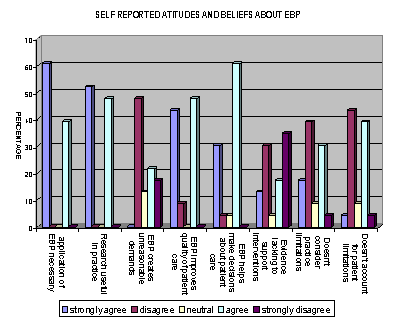 |
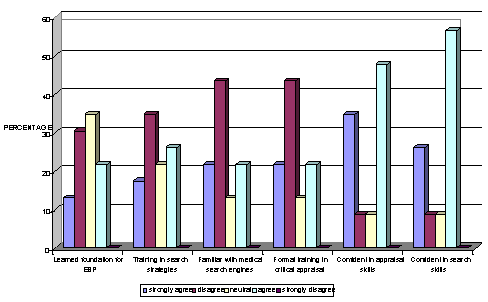 |
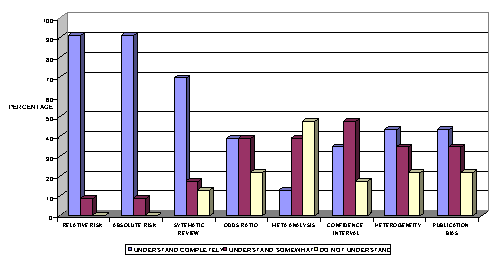 |
| Figure 1 | Figure 2 | Figure 3 |
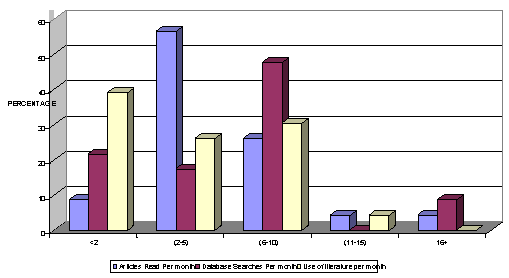 |
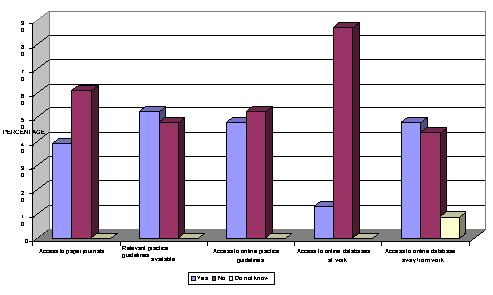 |
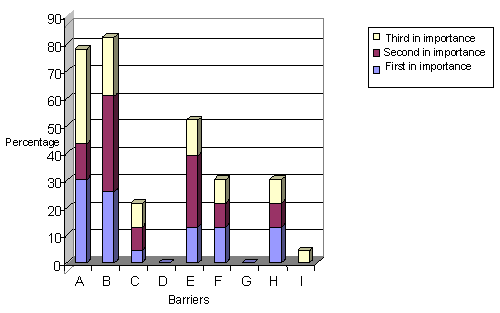 |
| Figure 4 | Figure 5 | Figure 6 |
Relevant Topics
- Abdominal Radiology
- AI in Radiology
- Breast Imaging
- Cardiovascular Radiology
- Chest Radiology
- Clinical Radiology
- CT Imaging
- Diagnostic Radiology
- Emergency Radiology
- Fluoroscopy Radiology
- General Radiology
- Genitourinary Radiology
- Interventional Radiology Techniques
- Mammography
- Minimal Invasive surgery
- Musculoskeletal Radiology
- Neuroradiology
- Neuroradiology Advances
- Oral and Maxillofacial Radiology
- Radiography
- Radiology Imaging
- Surgical Radiology
- Tele Radiology
- Therapeutic Radiology
Recommended Journals
Article Tools
Article Usage
- Total views: 22436
- [From(publication date):
February-2015 - Aug 29, 2025] - Breakdown by view type
- HTML page views : 17480
- PDF downloads : 4956
